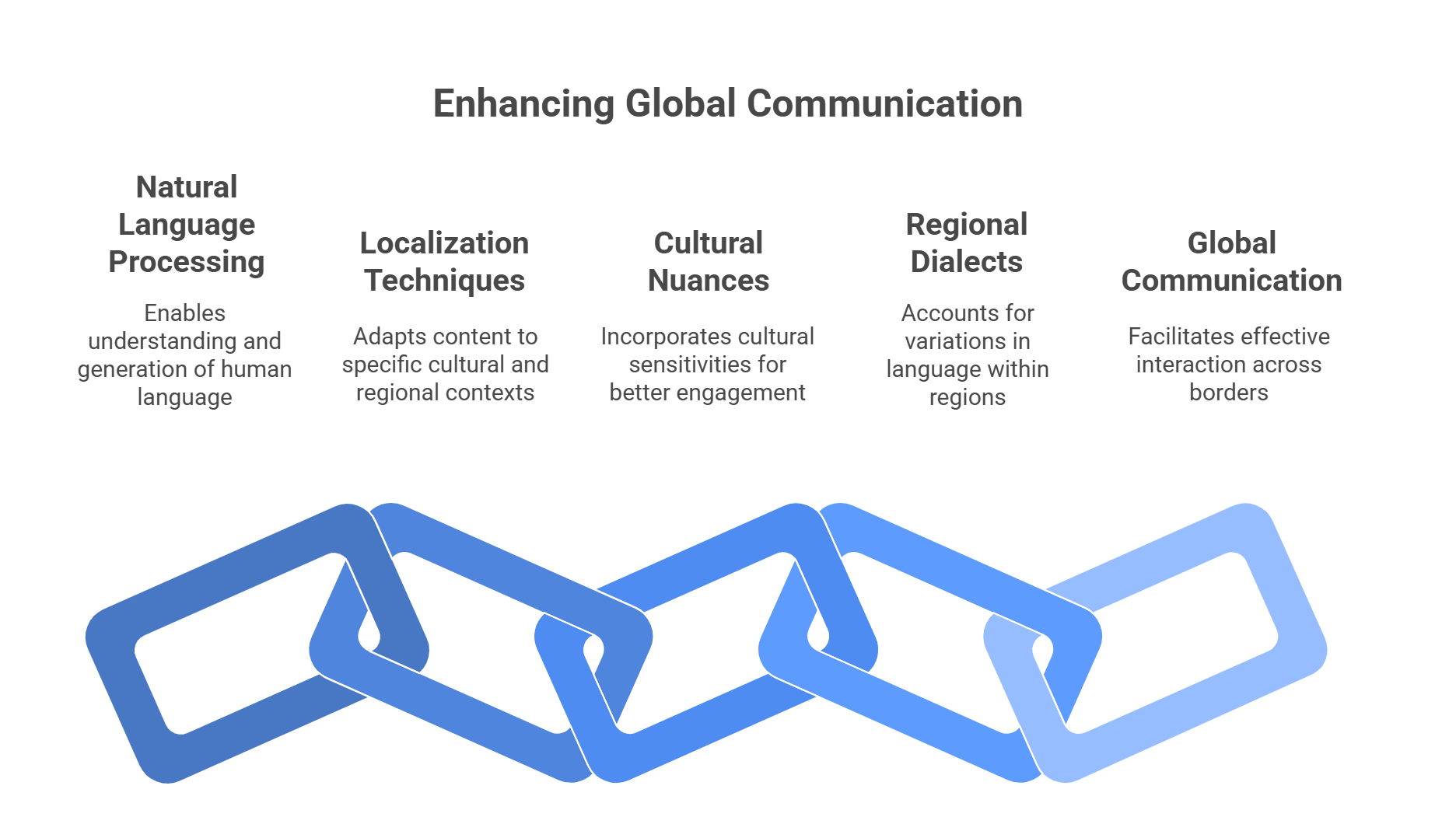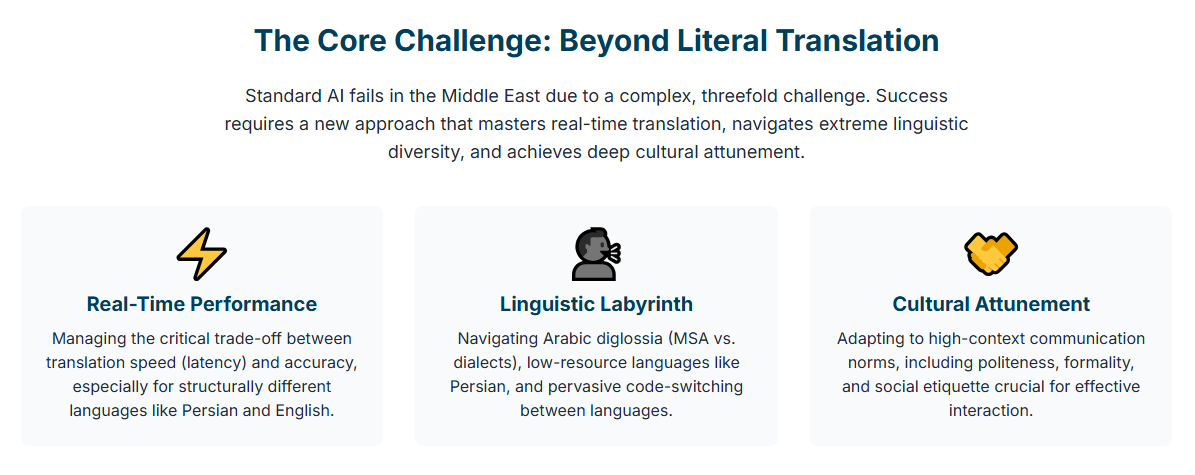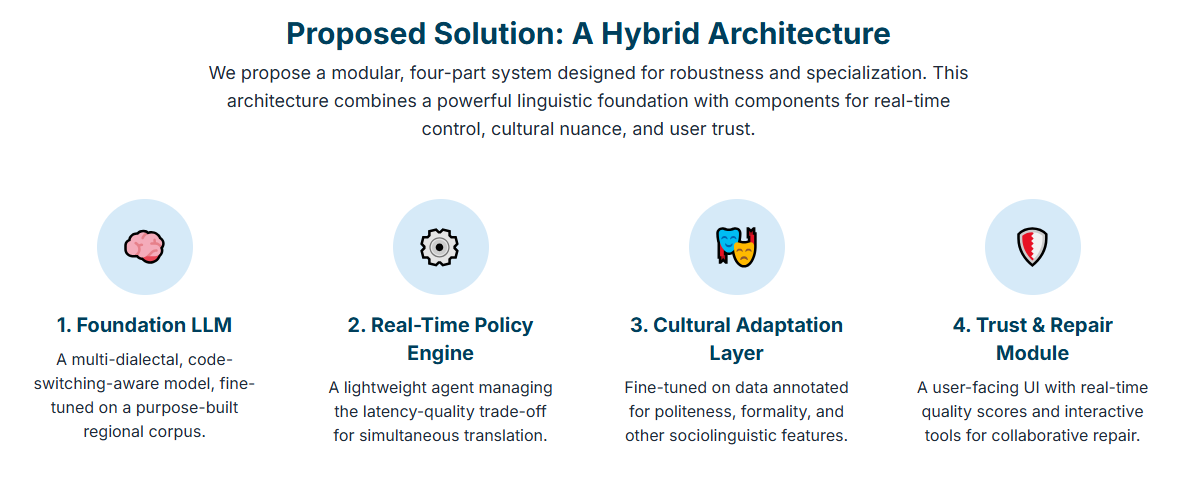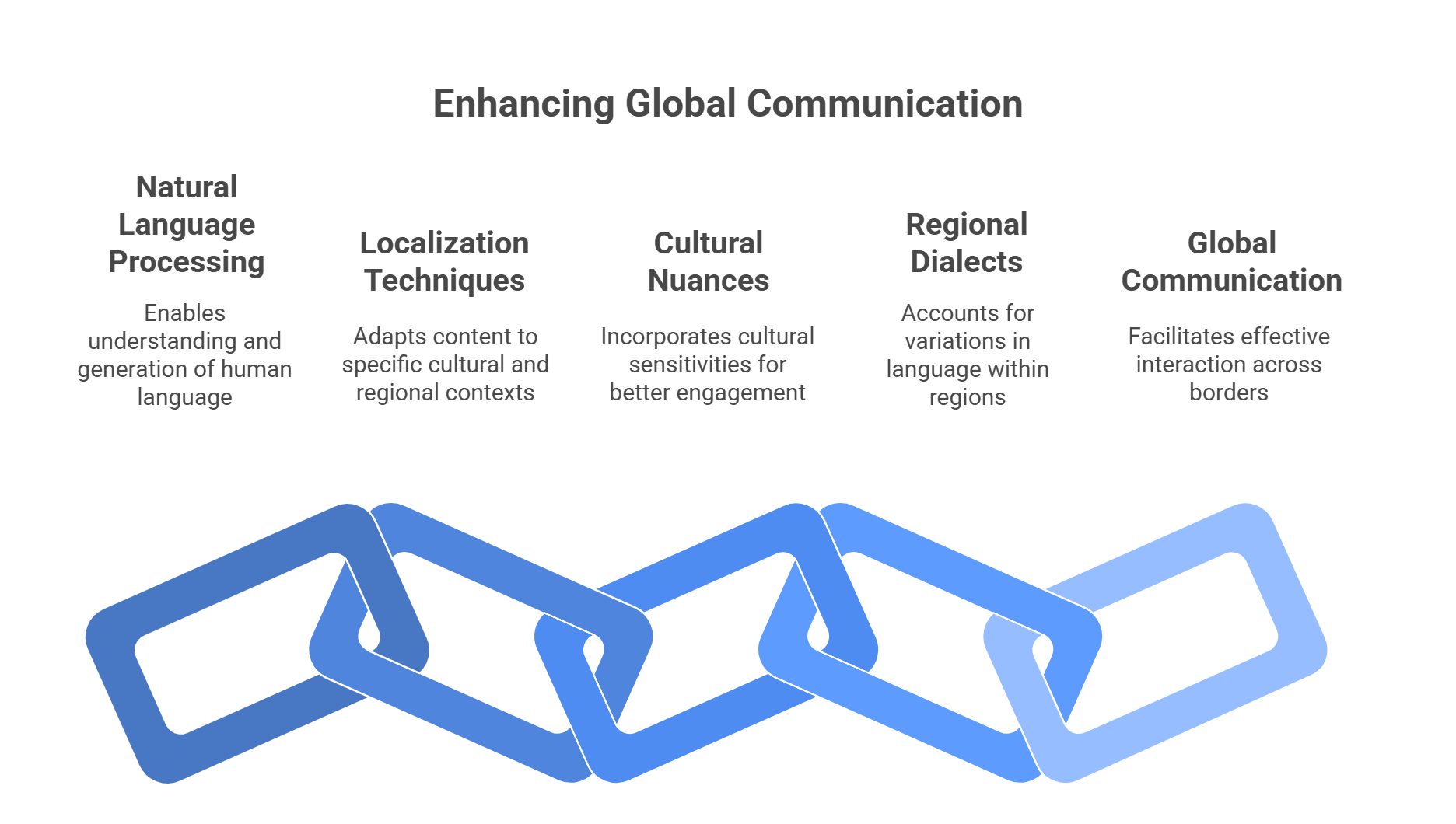Imagine a high-stakes business negotiation in Dubai. Your team is on the verge of closing a multi-million-pound deal. You’re relying on a state-of-the-art AI translation tool to bridge the language gap. But as the conversation flows, you notice a subtle shift in the room. The atmosphere cools. The deal stalls.
What went wrong? The AI translated your words perfectly, but it completely missed the meaning. A direct, efficient request that’s standard in London was perceived as abrupt and disrespectful. The AI failed to navigate the intricate web of politeness, formality, and high-context communication that governs business in the Middle East.
This isn’t a hypothetical scenario; it’s the critical challenge facing artificial intelligence today. While models like ChatGPT have mastered linguistic fluency, they often fail spectacularly at cultural fluency. They are powerful engines without a cultural compass.
This is where the next frontier of AI lies: the Localizer Agent. This isn’t just another translation app. It’s a sophisticated AI designed for instantaneous, culturally-attuned interaction, capable of understanding not just what is said, but how it is said and why it matters. For any global entity aiming to operate effectively in complex regions like the Middle East, building or leveraging such technology is no longer a luxury—it’s a strategic imperative.

The Great Communication Breakdown: Why Standard AI Fails
The dream of a universal translator is as old as science fiction. Yet, anyone who has relied on current technology for more than a simple query knows we’re not there yet. A staggering 93% of machine translation users report experiencing poor quality outputs. The problem is far deeper than just grammatical errors; it’s a fundamental clash between the AI’s design and the reality of human language.
The Labyrinth of Language
The first major hurdle is the sheer linguistic complexity, especially in a region like the Middle East. AI developers often make the critical mistake of treating languages like “Arabic” or “Persian” as monolithic blocks. The reality is a labyrinth of diversity.
- Arabic’s Dual Identity (Diglossia): The Arabic-speaking world operates on two levels. Modern Standard Arabic (MSA) is the formal language of news, government, and literature. But it’s not what people speak in their daily lives. Everyday conversation happens in a vast array of regional dialects—Egyptian, Gulf, Levantine, Maghrebi—which can be as different from MSA and each other as Spanish is from Italian. An AI trained only on formal MSA is like a person who learned to speak only from Shakespearean plays; it will sound stilted, unnatural, and completely out of touch in a casual conversation.
- The Code-Switching Reality: In highly globalised hubs across the Middle East, conversations fluidly move between languages. A single sentence might start in Arabic, borrow a technical term from English, and end with a French pleasantry. This practice, known as code-switching, is natural for humans but a nightmare for most AI models, which are built to operate in one language at a time. It causes a “vocabulary explosion” that breaks standard analysis.

The “Cultural Gap”
Even if an AI could perfectly master every dialect and switch languages flawlessly, it would still fail without cultural intelligence. The cultures of the Middle East are predominantly high-context. This means a huge portion of meaning is conveyed implicitly—through shared history, non-verbal cues, and indirect phrasing—rather than explicit words.
Consider the Arabic phrase inshallah (“if God wills”). A literal translation completely misses its nuanced power. Depending on the context and tone, it can be a sincere expression of hope, a polite way to decline a request without causing offence, or a way to express uncertainty. Standard AI, lacking deep cultural grounding, cannot distinguish between these meanings. It translates the words but butchers the intent. This is the “cultural gap,” and it’s where trust is broken and deals fall apart.
Engineering Empathy: A Blueprint for the Localizer Agent
To bridge this gap, we need to completely rethink how we build communication AI. The goal isn’t just translation; it’s cultural attunement. The solution requires a hybrid architecture, a system designed from the ground up to be a true communication partner.
The Four Pillars of a Culturally-Conscious AI
A successful Localizer Agent would be built on four key components:
- A Multi-Dialectal Foundation: The core engine must be a Large Language Model (LLM) that has been extensively fine-tuned on a purpose-built regional corpus. This means moving beyond generic web data and training the model on a rich diet of MSA, Persian, multiple Arabic dialects, and authentic examples of code-switching. Excitingly, this is already happening with the rise of powerful regional models like the UAE’s Jais and Saudi Arabia’s ALLaM.
- A Real-Time Policy Engine: For seamless, simultaneous translation, a second, lightweight AI agent is needed. Its only job is to manage the flow of conversation, deciding when to listen for more context and when to generate a translation segment. This ensures the interaction feels natural and responsive, mimicking the skill of a human interpreter.
- The Cultural Adaptation Layer: This is the agent’s soul. It’s achieved by fine-tuning the model on data that has been meticulously annotated by human cultural and linguistic experts for features like politeness, formality, sentiment, and honourifics. This allows the AI’s behaviour to be a dynamic setting. In a diplomatic meeting, it can be set to “high formality”; in a customer service chat, it can adopt a more casual, friendly tone.
- A User-Facing Trust Module: Acknowledging that no AI is perfect is crucial for building user trust. The agent’s interface must be transparent. This means incorporating a Quality Estimation (QE) score—a simple, real-time confidence rating (e.g., a green, yellow, or red light) for each translation. When confidence is low, the agent should become a collaborative coach, highlighting ambiguous phrases and offering alternatives to help the user repair the conversation. This “human-in-the-loop” design transforms the AI from a fallible black box into a trustworthy co-pilot.
The Real Competitive Advantage: Data, Not Algorithms
This leads to the most critical strategic conclusion: the most defensible advantage in this new era of AI will not be a novel algorithm. It will be the proprietary, ethically sourced, and deeply annotated dataset used to train the model. A data-first, not model-first strategy is the only path to success. The real intellectual property is the cultural and linguistic knowledge encoded within the data.

The High-Stakes Game: Where Hyper-Local AI Changes Everything
The applications for a true Localizer Agent are transformative, moving far beyond simple translation and into the core of global interaction.
Diplomacy and Global Business
In the high-stakes worlds of diplomacy and international business, where a single misunderstood word can derail a treaty or a merger, the value of a high-precision, culturally-aware agent is immeasurable. Governments are already deploying specialised AI to handle the nuance of diplomatic communication. A Localizer Agent offers a level of reliability, security, and cultural sensitivity that public tools simply cannot match, mitigating the immense risks associated with legal and contractual misinterpretations.
The Customer Service Revolution
On a larger scale, customer service provides a massive proving ground. We’ve seen the success of chatbots like Lulu Hypermarket’s “Salem,” which handled over 3 million users in its first month by understanding the local context. The next generation, powered by a Localizer Agent, could move beyond simple FAQs to handle complex, emotional, and culturally-sensitive customer interactions in the user’s preferred dialect, dramatically improving user experience and business outcomes.
The Ethical Imperative: Preservation over Erasure
Finally, developing this technology comes with profound ethical responsibilities. An improperly designed agent risks amplifying harmful stereotypes and contributing to the digital erasure of minority languages. However, when built correctly, the Localizer Agent becomes a powerful force for cultural preservation. By investing in capabilities for low-resource dialects, we validate and sustain linguistic diversity. The mission is not to create a single, homogenised global voice, but to build a responsible bridge between the many vibrant cultures of our world.
The future of AI isn’t just about building bigger models; it’s about building smarter, more empathetic, and more respectful ones. The Localizer Agent is more than a product—it’s a blueprint for a more connected and understanding world. For the organisations that embrace this vision, the reward is a foundational capability for navigating the beautiful complexity of our shared planet.



